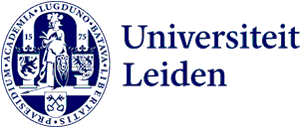Admission requirements
Computer account with access to Python and Python notebooks
Hands-on experience with Python (writing functions and loops), numpy and matplotlib (basic overview will be given)
Description
In this course you will learn how we detect faint structures next to bright stars, from exoplanets to circumstellar disks. The noise level in high contrast imaging is not set by the sky background but by the effects of diffraction in the telescope and science camera, summarised in a contrast curve that shows detection sensitivity as a function of angular separation from the central star. The relative contributions and characteristics of these noise sources are presented and discussed. We cover diffraction, quasi-static speckles and their time evolution, and the most recent developments in coronagraphs, and algorithms such as ADI, SDI, PDI, LOCI and PCA.
The course consists of a series of weekly lectures followed by a computer practicum class. The completion of the practicums will be part of the homework. There will be a take home exam at the end of the semester that will form part of the final grade.
In the course we cover:
Astronomical sources of interest – exoplanets and exodisks
A brief history of high contrast imaging
The Point Spread Function and its changes due to the atmosphere
Point source signal to noise and the contrast curve
Coronagraphs: Lyot, band limited, pupil plane, focal plane
Angular Differential Imaging, Spectral Differential Imaging
Diversity and Algorithms: LOCI, PCA, optimized PCA
Course objectives
You will gain an understanding of how to plan and take high contrast imaging data, how to interpret the attained sensitivity by generating contrast curves, and understand how several different algorithms are used and implemented to increase the sensitivity for faint point and extended sources.
After completing this course, you will be able to:
Identify the data reduction techniques required to extract the astrophysical source
Write computer code and reuse code developed during the course
Determine the signal to noise of the resultant observations
Identify artifacts introduced by the algorithms and determine astrophysical signals
Timetable
See Astronomy master schedules
You will find the timetables for all courses and degree programmes of Leiden University in the tool MyTimetable (login). Any teaching activities that you have sucessfully registered for in MyStudyMap will automatically be displayed in MyTimeTable. Any timetables that you add manually, will be saved and automatically displayed the next time you sign in.
MyTimetable allows you to integrate your timetable with your calendar apps such as Outlook, Google Calendar, Apple Calendar and other calendar apps on your smartphone. Any timetable changes will be automatically synced with your calendar. If you wish, you can also receive an email notification of the change. You can turn notifications on in ‘Settings’ (after login).
For more information, watch the video or go the the 'help-page' in MyTimetable. Please note: Joint Degree students Leiden/Delft have to merge their two different timetables into one. This video explains how to do this.
Mode of instruction
Lectures
Practical computer classes (immediately following the lectures)
Assessment method
Weekly assignments (60% of the final grade) - these are a completion of the computer practicums started after the lectures. Homeworks have a deadline of one week. Handing in a homework after one additional week will get half marks and is considered a retake of the homework. If no homework is handed in after two weeks, this is a failing grade with no retake for that homework. Students who have handed in all homeworks within the one week deadline are allowed to drop the lowest grade homework.
Computer based exam (40% of the final grade) - you will be given one week to submit your final exam. You must have submitted homeworks from the weekly assignments.
Reading list
A set of papers will provide the literature behind the methods discussed during the course.
Registration
As a student, you are responsible for registering on time, i.e. 14 days before the start of the course. This can be done via Mystudymap. You do this twice a year: once for the courses you want to take in semester 1 and once for the courses you want to take in semester 2. Please note: late registration is not possible.
Registration for courses in the first semester is possible from July; registration for courses in the second semester is possible from December. First-year bachelor students are registered for semester 1 by the faculty student administration; they do not have to do this themselves. For more information, see this page.
In addition, it is mandatory for all students, including first-year bachelor students, to register for exams. This can be done up to and including 10 calendar days prior to the exam or up to five calendar days in case of a retake exam. You cannot participate in the exam or retake without a valid registration in My Studymap.
Extensive FAQ's on MyStudymap can be found here.
Contact
Lecturer: Dr. M.A. (Matt) Kenworthy
Remarks
NOTE: we can not support software installations on your laptop.
Soft skills
In this course, you will be trained in the following behaviour-oriented skills:
Problem solving (recognizing and analyzing problems, solution-oriented thinking)
Analytical skills (analytical thinking, abstraction, evidence)
Motivation (commitment, pro-active attitude, initiative)
Self-regulation (independence, self-esteem, aware of own goals, motives and capacities)
Verbal communication (presenting, speaking, listening)
Written communication (writing skills, reporting, summarizing)
Critical thinking (asking questions, check assumptions)
Creative thinking (resourcefulness, curiosity, thinking out of the box)
